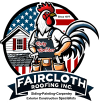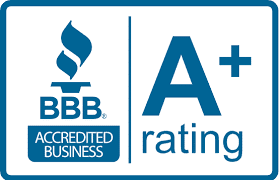
Home siding is a protective barrier and a key aesthetic element for a property. Over time, exposure to harsh weather conditions, moisture, and natural wear can cause the siding to deteriorate, leading to structural vulnerabilities and a decline in curb appeal. The decision to replace siding involves cost, durability, and long-term value. Understanding the advantages and potential drawbacks of home siding replacement can help determine if it’s the right investment.
Why is Home Siding Replacement Necessary?
Damaged or aging siding puts a home at risk of structural problems, rising energy bills, and a worn-out appearance. Cracks, warping, or fading indicate that exterior protection is weakening, making the property vulnerable to moisture damage and insulation issues. A replacement provides long-term durability, improved energy efficiency, and a refreshed look that enhances curb appeal. Homeowners should recognize when siding is ineffective and consider an upgrade before minor issues turn into costly repairs.
Visible Cracks and Warping Signal Structural Weakness
Gaps, fractures, or bulging panels indicate that the siding has lost its integrity. Water can seep through these openings, leading to mold growth and interior damage. Warped sections suggest prolonged exposure to moisture, causing the material to expand or deteriorate. Addressing these issues earlier prevents costly structural repairs and extends the home’s lifespan.
Persistent Mold and Mildew Growth Indicate Moisture Issues
Dark spots or greenish patches on the siding suggest trapped moisture beneath the surface. Excessive humidity allows fungi to thrive, weakening the material and spreading to interior walls. This problem reduces air quality and increases the risk of respiratory issues for household members. Upgrading to moisture-resistant siding minimizes future damage and maintains a healthier living space.
Increasing Energy Bills Point to Insulation Failure
Rising heating and cooling costs often result from poor insulation caused by deteriorating siding. Drafts and temperature inconsistencies signal that exterior panels no longer provide an effective barrier. It forces HVAC systems to work harder, leading to higher energy consumption. A siding replacement with better insulation properties helps maintain indoor comfort while reducing utility expenses.
Peeling Paint or Fading Colors Suggest Aging Material
Siding that frequently needs repainting or shows widespread discoloration has reached the end of its lifespan. Exposure to harsh sunlight, wind, and rain causes fading, making the home look outdated. When protective coatings wear off, siding becomes more susceptible to cracks and water damage. Choosing a durable, fade-resistant material prevents frequent touch-ups and preserves the home’s curb appeal.
Rotting or Soft Spots Reveal Advanced Deterioration
Pressing on siding panels and feeling softness or sponginess indicates internal decay. Wood and fiber-based materials are particularly prone to rotting when exposed to prolonged moisture. If left unaddressed, the damage spreads to structural components, leading to expensive repairs. Replacing compromised siding with a weather-resistant option prevents further degradation and strengthens the home’s exterior.
Frequent Pest Infestations Suggest Gaps and Weaknesses
Small openings in worn-out siding allow insects and rodents to enter the home. Termites, ants, and other pests thrive in damp, decaying materials, accelerating deterioration. Once inside, these intruders cause additional damage to insulation, wiring, and wooden structures. Installing new siding with a secure, sealed design removes unwanted pests and protects the home’s foundation.
Estimated Cost of Home Siding Replacement
The cost of replacing home siding depends on material choice, labor rates, home size, and installation complexity. Prices vary widely, making comparing options based on durability, maintenance, and long-term value necessary. Higher-quality materials may require a larger upfront investment but offer extended lifespans and reduced maintenance costs. Examining estimated costs for different siding types helps homeowners plan a budget that balances affordability and long-term benefits.
Vinyl Siding (Four to Ten Dollars Per Square Foot)
Vinyl remains one of the most budget-friendly siding options due to its low material and installation costs. Pricing depends on panel thickness, texture, and insulation features. Lower-end vinyl costs around four dollars per square foot, while premium insulated options reach ten dollars. Its affordability makes it a popular choice for homeowners seeking a cost-effective upgrade.
Fiber Cement Siding (Six to $13 Per Square Foot)
Fiber cement provides a durable, fire-resistant alternative with a wood-like appearance. Material costs range from six to ten dollars per square foot, while installation costs thirteen dollars. Labor expenses run higher due to fiber cement boards’ weight and cutting requirements. Its longevity and low maintenance requirements make it a strong investment despite the cost.
Wood Siding (Seven to $15 Per Square Foot)
Natural wood siding offers timeless appeal but has higher material and upkeep expenses. Basic wood clapboard costs seven dollars per square foot, while premium hardwood options reach fifteen dollars. Maintenance costs, including sealing and repainting, add to long-term expenses. Its aesthetic value appeals to homeowners willing to invest in regular upkeep.
Metal Siding (Eight to $16 Per Square Foot)
Steel and aluminum siding provide excellent durability and resistance to fire and pests. Standard aluminum panels start at eight dollars per square foot, while higher-end steel options reach sixteen dollars. Metal siding requires minimal maintenance, reducing long-term costs. Its sleek appearance and weather resistance make it a good choice for modern homes.
Stucco Siding (Nine to $17 Per Square Foot)
Stucco creates a textured, durable exterior that withstands various climates. Traditional stucco costs nine dollars per square foot, while synthetic variations with added insulation cost seventeen dollars. Labor-intensive installation increases overall costs, making it more expensive than other materials. Its energy efficiency and longevity provide financial benefits over time.
Brick Veneer Siding (Ten to $20 Per Square Foot)
Brick veneer delivers the appearance of solid brick at a lower cost. Standard options cost around ten dollars per square foot, while higher-end varieties reach twenty dollars. Installation requires additional structural support, increasing labor expenses. Its durability and minimal maintenance make it a long-lasting investment.
Stone Veneer Siding ($12 to $25 Per Square Foot)
Stone veneer mimics the look of natural stone while reducing material weight. Pricing starts at twelve dollars per square foot for manufactured stone, with premium options reaching twenty-five dollars. High installation costs result from labor-intensive applications and specialized adhesives. Despite the price, stone veneer enhances home value and aesthetic appeal.
Total Installation Costs Depend on Home Size and Labor Rates
The total siding replacement cost depends on square footage, regional labor rates, and project complexity. Smaller homes require less material and labor, lowering overall expenses. Larger properties or multi-story homes increase installation difficulty, raising labor charges. Hiring experienced professionals ensures quality installation that maximizes siding longevity.
Why is Home Siding Replacement Worth Investing In?
A well-planned replacement strengthens structural integrity, enhances insulation, and modernizes the exterior. Investing in high-quality materials ensures long-term savings by minimizing maintenance and repair costs. Homeowners benefit from increased property value, improved indoor comfort, and lower energy expenses. Choosing the right siding transforms a home’s durability while providing financial and aesthetic advantages.
Stronger Protection Against Weather Damage
Harsh weather conditions gradually weaken old siding, leading to cracks and leaks. A high-quality replacement shields the home from rain, snow, and extreme temperatures. Moisture-resistant materials prevent mold growth, reducing the risk of interior damage. Reinforced siding withstands heavy winds and impact, ensuring long-term durability. An adequately installed exterior keeps the structure secure during unpredictable weather events.
Increased Home Value for Future Resale
Buyers look for homes with modern, well-maintained exteriors that require minimal upkeep. New siding improves first impressions, making a property more attractive. A fresh, durable finish assures potential buyers they won’t face immediate repair costs. Competitive home prices often reflect updated siding, increasing the return on investment. Long-lasting materials help maintain property value for years after installation.
Reduced Long-Term Maintenance and Repair Costs
Due to wear and tear, old siding requires frequent repainting, sealing, or patching. A replacement eliminates recurring maintenance using durable materials that resist fading and cracking. Modern fiber cement and vinyl offer years of protection with minimal upkeep. Stronger materials prevent water damage, reducing the need for costly repairs. Investing in siding that withstands the elements saves homeowners both time and money.
Better Energy Efficiency and Lower Utility Bills
Insufficient siding insulation allows air leaks, forcing HVAC systems to work harder. High-performance siding materials improve thermal resistance, stabilizing indoor temperatures. A properly sealed exterior reduces drafts, leading to significant energy savings. Lower heating and cooling expenses make the investment worthwhile over time. An energy-efficient home provides long-term financial benefits without sacrificing comfort.
Modernized Exterior Aesthetic and Design Flexibility
An outdated exterior reduces a home’s overall appeal and gives an impression of neglect. New siding offers a range of colors, textures, and materials that suit different architectural styles. Homeowners can choose finishes that enhance curb appeal while complementing other exterior features. A refreshed look not only improves personal satisfaction but also attracts potential buyers. High-quality siding options provide a polished appearance that lasts for years.
Stronger Resistance Against Mold, Rot, and Pests
Old siding with cracks and gaps allows moisture to accumulate, leading to mold growth and wood rot. Certain materials, like fiber cement and metal, resist moisture and prevent fungal infestations. Sealed, durable siding keeps termites, ants, and rodents from nesting inside walls. Preventing these issues eliminates potential health risks and costly repairs. Choosing a weather-resistant material extends the lifespan of both the siding and the home’s structure.
Improved Indoor Comfort and Noise Reduction
Exterior walls with damaged or thin siding fail to effectively block outside noise. High-quality siding with proper insulation dampens sound from traffic, neighbors, and strong winds. A quieter home enhances relaxation and creates a more peaceful living environment. Enhanced insulation also keeps indoor temperatures stable throughout the year. Investing in better siding improves both home comfort and overall quality of life.
A Long-Term Investment That Pays Off Over Time
Siding replacement may seem like a considerable upfront expense, but it brings lasting benefits. Energy savings, lower maintenance costs, and increased property value offset the initial cost. Modern materials last for decades, eliminating the need for frequent replacements. A well-installed exterior prevents structural issues, avoiding expensive future repairs. The long-term financial and practical advantages make siding replacement a smart investment.
Preserve Your Property With Home Siding Replacement
A well-installed siding replacement strengthens a home’s defense against harsh weather, moisture, and structural wear. Durable materials prevent long-term damage, reducing the risk of costly repairs and interior deterioration. Upgrading siding enhances insulation, maintaining a stable indoor climate while lowering energy expenses. The initial investment pays off over time by cutting maintenance costs, increasing property value, and improving overall comfort. Choosing high-quality siding ensures lasting protection, making it a practical and financially sound decision for homeowners.
Get informed about home siding replacement and its long-term value on the Faircloth Roofing Inc. blog.






